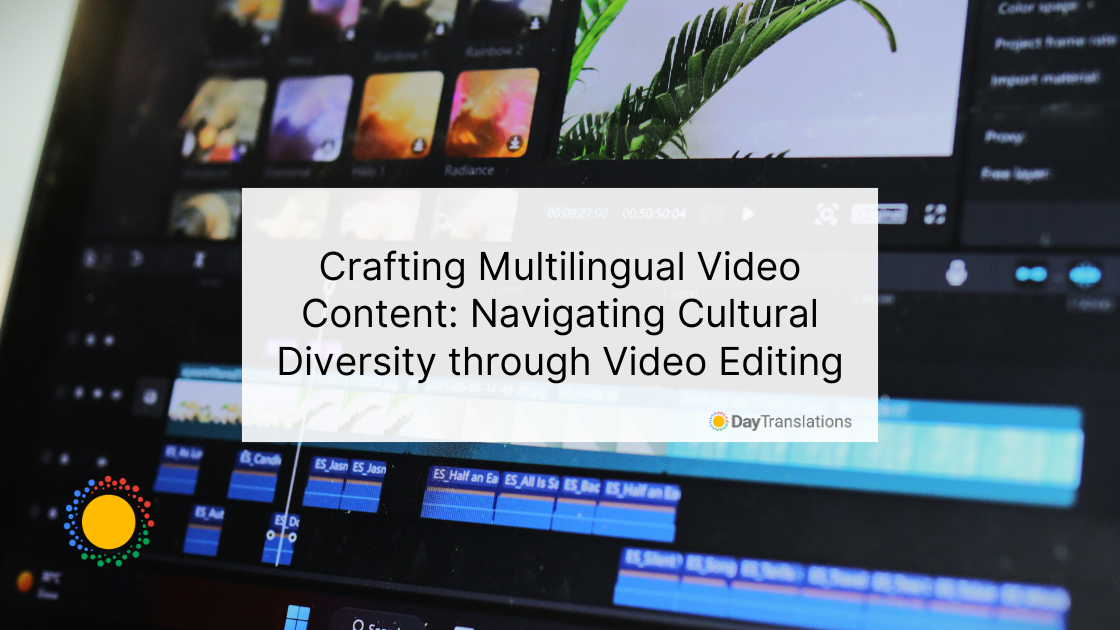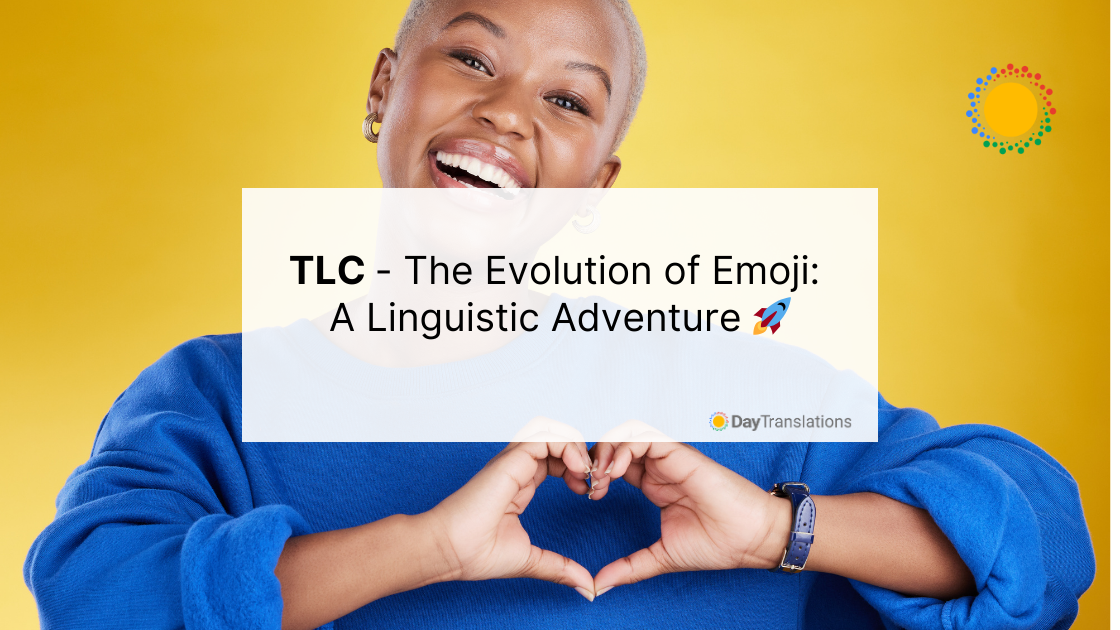In today’s interconnected world, globalizing your brand is pivotal for real business growth. And to achieve that, you need to cook up content that speaks the language of audiences from every corner of the map. Video content marketing isn’t just your ordinary attention-grabber; it’s the star player in your brand’s championship team. It strides in, markets your brand, sparks global conversations, and leaves with a bag full of leads. But, did you know most internet users have a soft spot for content in their native language? This is where multilingual video content comes in!
Dubbing your video content into multiple languages is the key to unlocking the real power of your content. This move isn’t just a high-five for your content; it’s the boost your business ROI has been waiting for.
In this article, we will delve into the concept of multilingual video content as well as discuss some actionable strategies to help you get started.
What is Multilingual Video Content, and Why is it so Important?
Multilingual video content is the creation of videos in different languages. Typically, these videos start in English and are then adapted into the native languages of the targeted regions. Achieving this depth of connection requires the creation of content that transcends geographical boundaries, nurturing a truly inclusive digital experience.
The significance lies in the ability of globally respected and relatable video content to resonate with diverse audiences. Moreover, when videos incorporate the customs, traditions, and values of various groups, they are better received by the audience. This results in a more immersive experience, cultivating a profound sense of connection.
What are the Benefits of Multilingual Video Content?
Let’s explore the top benefits of creating multilingual video content:
Wider Reach
For decades, English was the leading international language that monopolized the internet. Over half of the web pages online were in English. However, now, the scenario has drastically changed, with other languages gaining ground.
Statistics reveal that only 25.9% of internet users speak English. This means that there is a tremendous need for content in other widely used languages such as Spanish, French, Chinese, and Arabic. Creating more multilingual video content covering a large variety of languages enables businesses to expand their reach beyond what English-only content can achieve, reaching a broader and more diverse audience.
Improved SEO
Multilingual video content boosts SEO by broadening the reach and relevance of your digital assets. By offering content in multiple languages, businesses can connect with a global audience, increasing the likelihood of their content appearing in search results for users across linguistic demographics.
This multilingual content marketing strategy not only diversifies keyword targeting but also reduces competition in specific language markets. Moreover, the availability of content in users’ native languages contributes to a positive user experience, impacting engagement metrics and, consequently, SEO rankings.
Higher Engagement
According to a survey by CSA Research, 76% of customers prefer to purchase a product or service from a website that offers information in their own native language. In addition, 40% of individuals state that they would never make a purchase from websites in languages other than their own.
Translating your website’s video content into various languages becomes crucial in attracting a broader consumer base and effectively engaging with them. A heightened level of engagement frequently results in increased sales and revenue.
An Immersive Audience Experience
Multilingual video content enhances user experience by addressing language preferences and fostering inclusivity. Offering content in users’ native languages ensures accessibility, allowing a broader audience to connect with and understand the material. This approach not only promotes cultural relevance but also demonstrates a global perspective, making users from different backgrounds feel valued.
This leads to high user engagement and an overall positive and inclusive viewing experience.
Key Considerations in Crafting Multilingual Video Content
Here are some crucial tips that you must keep in mind to create multilingual content that truly resonates with your audience.
Understand Your Audience Inside Out
Simply translating your existing video content into another language isn’t enough. To truly exploit the potential of multilingual content, you must take the time to research your target audience.
Once you have identified your target groups, their needs and preferences, you can tailor localized video content that addresses their concerns. It will help you engage your prospects on an emotional level and boost the chances of your business’s success in a foreign market.
Imagine you have an English video promoting a new fitness app, and you want to localize it for a Japanese audience. So, in the original video, there are people jogging in a Western urban setting – but hold your chopsticks, we’re changing scenery for our Japanese audience.
In the Japanese version, imagine a serene garden where individuals gracefully practice Tai Chi or participating in group activities popular in Japanese fitness culture.
By adding these cultural nuances to your video, you’re not just localizing; you’re creating a fitness experience that feels right at home.
Keep Your Core Message Simple and Consistent
Consistency is key when developing a multilingual video content marketing strategy. The integrity of your content should rarely waver as it adapts to diverse markets. This consistency helps to build trust and recognition, irrespective of the language in which the content is consumed. Additionally, the message should be kept simple, understandable, and easily relatable.
Let’s say you have a global campaign for a new skincare product, and your original video in English emphasizes the product’s natural ingredients against a backdrop of lush green landscapes. Now, you want to adapt this for a French audience.
In the original English video, the focus is on the product’s natural ingredients set against vibrant landscapes. Now, for the French adaptation, you’ll preserve the core theme of nature and product purity. However, you might switch the backdrop to picturesque French vineyards or lavender fields, aligning with iconic French scenery.
The language used in the video remains simple and clear, emphasizing the natural benefits of the skincare product, perhaps with a touch of French elegance and sophistication.
By upholding these consistent elements across different language adaptations, you ensure the campaign’s essence remains intact.
Pay Attention to Cultural Sensitivity
Every region has a different culture. Make sure to respect and incorporate cultural nuances and sensitivities in your video content, adhering to the various regions. Adapt visuals and images that are culturally relevant. Pay attention to the symbols or gestures that you may use in your videos, as certain gestures have different implications in different cultures.
Take the classic ‘thumbs up’ gesture – a symbol that’s been around for millennia. Now, in most American and European countries, it’s a cheerful agreement, a virtual high-five. But hop over to some Asian and Islamic regions, and it takes a 180-degree turn – it’s a big, fat insult. So, when you’re crafting your videos, it’s like tailoring a suit – one size doesn’t fit all. Be the cultural chameleon your content deserves.
Also, if you are using subtitles in your video content, ensure they are accurately translated and appropriately timed. This will boost the accessibility of your content and make sure it resonates positively with varied audience groups.
Use Localized Keywords and Tags
Once you have translated your videos, it is important to make sure the right people find them. Therefore, you must use appropriate tags and keywords in each region you are targeting.
Conduct research into popular keywords in each region and incorporate them into your video titles and descriptions. This will boost SEO, enabling more people to discover and watch them.
Navigating Video Editing Techniques for Cultural Relevance
Video editing is a crucial aspect of video creation which involves:
- Assembling the different video footage
- Cutting and mixing reels
- Fading and doing more to make the final output appealing to the viewers
Now, when you’re dancing on the global stage, video editing becomes your passport to universal appeal. You must edit the video thoroughly to ensure it matches the likes and preferences of diverse audience groups. An AI video editor can simplify this process, making it easier to tailor content for different viewers. Experienced editors familiar with video editing can leverage advanced software for expansive creative exploration. On the flip side, individuals managing small teams or entering the video editing domain can explore a selection of easy video editors for beginners.
What are the Challenges and Pitfalls in Crafting Multilingual Video Content?
Crafting multilingual video content presents certain challenges that marketers must be aware of. The most notable ones are as below:
Translation Inaccuracy
Achieving accurate translations is crucial. Literal translations may lead to misunderstandings or loss of intended meaning. Idioms, rhymes, or puns pose particular challenges, demanding nuanced translations to preserve their meaning. Moreover, words or phrases with multiple meanings can lead to varied perceptions among viewers.
Overcoming these linguistic complexities is crucial for maintaining the effectiveness of video content marketing and ensuring a seamless cross-cultural communication experience.
Cost-Intensiveness
Crafting multilingual content is a time-consuming and costly process. Several aspects, such as dubbing and subtitling, require expert professionals who are well-trained in technical aspects like voice modulation and timing. All this adds significant costs to the production process.
Legal and Compliance Issues
Different regions in the world may have varying legal and compliance regulations. This includes copyright laws, cultural norms, privacy regulations, etc. Failure to adhere to these regulations in your video content may lead to legal consequences.
Varying Regional Preferences
Audiences spread across diverse regions may have varying regional demands and preferences. Carefully understanding and catering to these demands is a challenging process. What may work well in one cultural context may not resonate in another, necessitating marketers to thoroughly evaluate regional tastes and sensibilities.
Conclusion
Creating multilingual content in today’s hyper-connected world offers a myriad of benefits, from broader reach and inclusivity to an enhanced viewer experience. It helps to bridge the language gap and engage audiences from diverse linguistic backgrounds.
However, crafting effective multilingual video content requires precise planning and research. The aforementioned tips will help you develop relevant and engaging videos to attract viewers in multiple markets.














Sorry, the comment form is closed at this time.